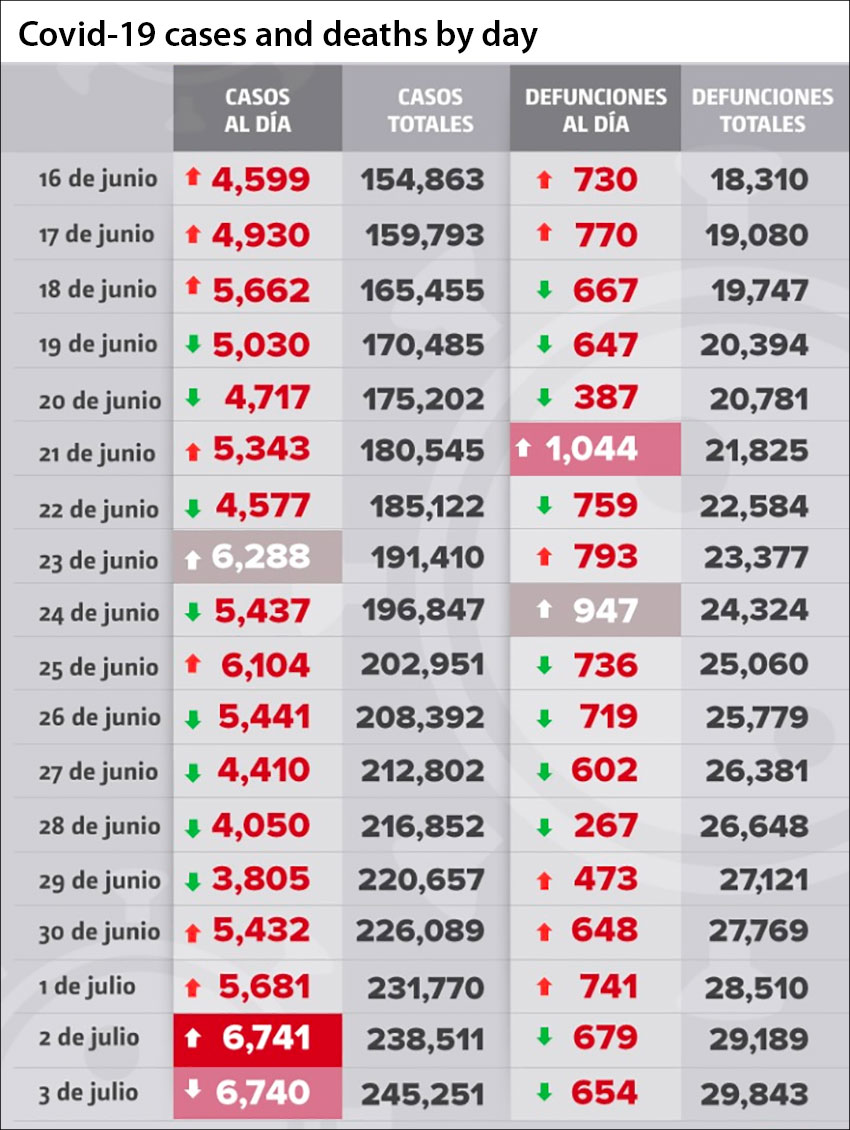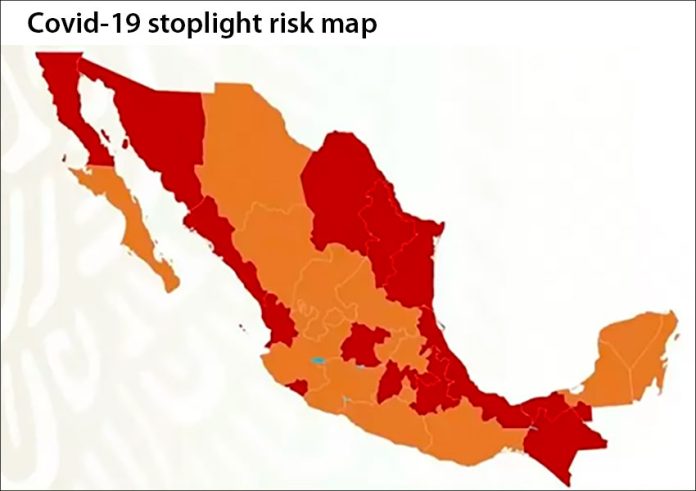Five states switched from orange to red on the federal government’s latest color-coded “stoplight” map, used to indicate the risk of coronavirus infection, while four states moved in the opposite direction from red to orange.
Fifteen states were allocated a “red light” denoting the maximum risk on the new map presented at the Health Ministry’s coronavirus press briefing on Friday night, an increase of one compared to the map that has been in effect this week, while the other 17 states were given an “orange light” indicating high risk.
The new stoplight colors and corresponding restrictions will take effect on Monday.
The five states that will move back to “red light” restrictions are Chiapas, Tamaulipas, Veracruz, Guanajuato and Coahuila.
The other 10 “red light” states that saw no change to their risk level on the new map are Baja California, Colima, México state, Nayarit, Nuevo León, Puebla, Sinaloa, Sonora, Tabasco and Tlaxcala.

The four states where coronavirus conditions improved, triggering a switch from red to orange, are Guerrero, Hidalgo, Morelos and Oaxaca.
The other 13 “orange light” states are Aguascalientes, Baja California Sur, Campeche, Chihuahua, Durango, Jalisco, Michoacán, Mexico City, Querétaro, Quintana Roo, San Luis Potosí, Yucatán and Zacatecas.
The government considers four factors when determining the risk level and corresponding stoplight color for each state: case number trends (whether new infections are increasing, decreasing or stable), hospital admission trends for coronavirus patients, hospital occupancy levels and positivity rates (the percentage of people tested who are confirmed to have Covid-19).
States allocated an orange light can ease restrictions, allowing a range of businesses including restaurants, cinemas and hair salons to operate, though at reduced capacity. State governments have the power to tweak the recommended restrictions at each risk level as they see fit.
A “yellow light” denoting a medium risk of coronavirus infection and a “green light” indicating low risk can also be allocated to a state under the “stoplight” system but no states have transitioned to those colors since the system was introduced at the start of June.
After the number of new Covid-19 cases reported by the Health Ministry declined for four consecutive days between last Friday and Monday, case numbers increased on both Tuesday and Wednesday before hitting a record single-day high of 6,741 on Thursday.
New cases declined by one on Friday to 6,740, increasing Mexico’s accumulated tally to 245,251.
As a result, Mexico moved past Italy, one of the early hotspots of the pandemic, to rank ninth in the world for total cases, according to data compiled by Johns Hopkins University.
The Health Ministry also reported 654 additional Covid-19 fatalities, lifting the official death toll to 29,843. Mexico still has the sixth highest death toll in the world behind the United States, Brazil, the United Kingdom, Italy and France.
In addition to the confirmed Covid-19 deaths in Mexico, 2,169 fatalities are suspected to have been caused by the disease.
Of the confirmed cases, 26,063 are considered active, an increase of 498 compared to Thursday. There are also 77,750 suspected cases across the country while just under 625,000 people have been tested.
National data shows that the positivity rate has remained steady in recent weeks at or just below 50%, meaning that about one in every two people tested is found to have Covid-19.
Mexico’s positivity rate is much higher than most other countries because the government is not testing widely, instead focusing on people with coronavirus-like symptoms.
Source: Milenio (sp)
